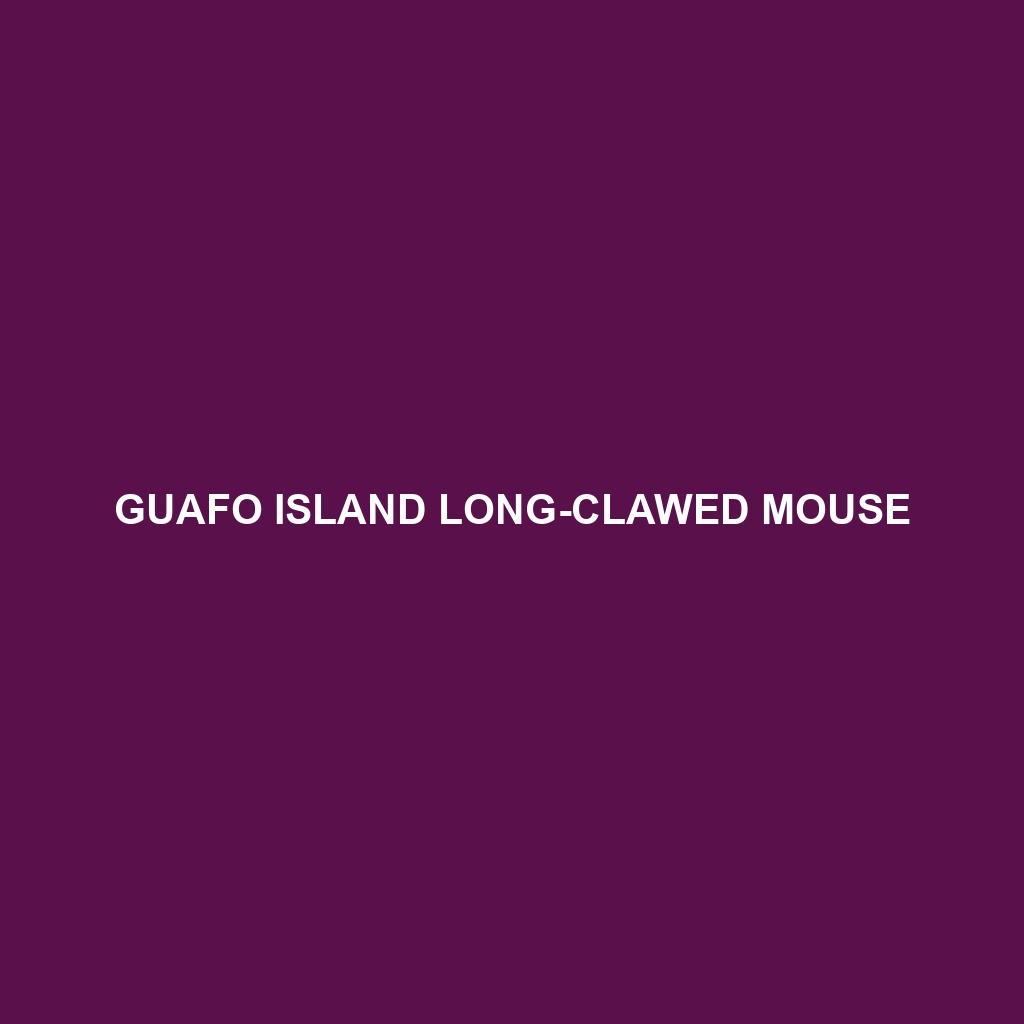Guafo Island Long-clawed Mouse
Common Name: Guafo Island Long-clawed Mouse
Scientific Name: Abrothrix guafensis
Habitat: The Guafo Island Long-clawed Mouse is primarily found in the coastal regions of Guafo Island, located in the Chilean Patagonia. This species thrives in temperate rainforest ecosystems, often inhabiting areas with dense undergrowth, such as humid forests and shrubby terrains. Its geographical range is limited, making it endemic to this specific island environment.
Physical Characteristics: The Guafo Island Long-clawed Mouse is a medium-sized rodent, typically measuring about 12-15 cm in body length, excluding its tail. Its fur exhibits a rich, dark brown coloration with lighter underparts. The distinctive long claws are an adaptation for climbing and digging, making them easily identifiable. Their rounded ears and large eyes also contribute to their charming appearance, appealing to nature enthusiasts and researchers alike.
Behavior: This rodent is primarily nocturnal, engaging in most of its activity during the night. The Guafo Island Long-clawed Mouse is known for its agility and adept climbing abilities, often seen foraging for food in trees and shrubs. They are social creatures, frequently observed in small family groups. Their vocalizations include soft squeaks, which play a vital role in communication and social bonding within their communities.
Diet: The diet of the Guafo Island Long-clawed Mouse consists mainly of seeds, fruits, and insects. Being opportunistic feeders, they adapt their diet based on seasonal availability, often foraging in the forest undergrowth. Their feeding habits contribute significantly to seed dispersal within their habitat, aiding the growth of various plant species.
Reproduction: Breeding typically occurs during the warmer months, from November to March, with females giving birth to litters of 3-5 offspring after a gestation period of about 25 days. The young are altricial at birth, requiring care and protection from their mothers until they are old enough to venture out on their own. Parental investment is high, with both parents often participating in the upbringing of the young.
Conservation Status: The Guafo Island Long-clawed Mouse is currently listed as Vulnerable on the IUCN Red List due to its restricted habitat and potential threats from habitat loss and invasive species. Conservation efforts are critical to preserving this unique species and its native habitat.
Interesting Facts: One fascinating fact about the Guafo Island Long-clawed Mouse is that it has a unique adaptation that allows it to climb trees with remarkable ease. This adaptability not only aids in foraging but also helps in escaping predators. Its limited geographical range makes it a subject of interest for conservation biologists studying island biodiversity.
Role in Ecosystem: The Guafo Island Long-clawed Mouse plays a crucial role in its ecosystem as both a seed disperser and a prey species for various predators. By facilitating plant growth through their feeding habits and providing sustenance for larger animals, they help maintain the delicate balance of their forest ecosystem. Their presence contributes to the overall biodiversity of Guafo Island, highlighting the importance of preserving this unique species.
